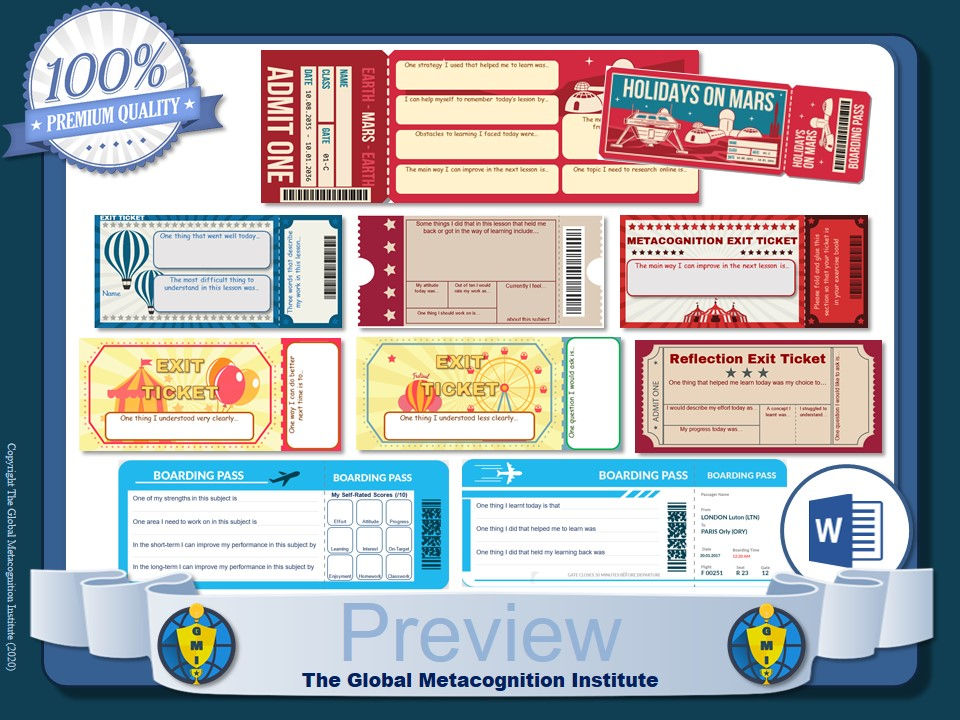Metacognition is often defined as "thinking about thinking"; metacognitive pedagogies focus on the planning, monitoring, evaluation and regulation of cognition. Definitions range in their breadth: a broad definition from EduTechWiki states that metacognition is "the cognitive control and monitoring of all sorts of cognitive processes like perception, action, memory, reasoning or emoting". The UNESCO 'Thinking Without Frontiers' report states that metacognition means thinking about one's thinking processes and states that it “has to do with the active monitoring and regulation of cognitive processes”.
Metacognition can be explained as individuals’ use of information while they are learning or fulfilling a task and a deliberate organisation in cognitive processes (Brown, Bransford, Ferrara & Campione, 1983) - Wilson (1998) regards metacognition as knowledge and awareness of thinking processes and strategies (together with the ability to evaluate and organise these processes). In ‘How People Learn, the National Academy of Sciences’ synthesis of decades of research on the science of learning, one of the three key findings of this work is the effectiveness of a “‘metacognitive’ approach to instruction” (Bransford, Brown, & Cocking, 2000, p. 18).
This article focuses on innovative new metacognitive strategies for the secondary classroom.
Metacognitive Strategies for the Classroom
Think aloud: Teachers can model their own thinking process by verbalizing their thoughts while working through a task or problem. This helps students understand how to approach a task and problem-solve.
Reflection prompts: Providing reflection prompts at the end of a lesson encourages students to think about what they learned, how they learned it, and what they could improve upon next time.
Metacognitive journals: Have students write about their thinking processes, strategies, and challenges in a journal to help them better understand and reflect on their learning.
Mind mapping: Use mind maps to help students organize their thoughts and ideas and make connections between concepts.
Graphic organizers: Use graphic organizers to help students visualize the relationships between concepts and ideas.
Summarizing: Have students summarize what they have learned in their own words to help them process and retain information.
Questioning: Encourage students to ask and answer questions to help them deepen their understanding of a topic.
Self-assessment: Have students evaluate their own learning and understanding of a topic to help them identify areas for improvement.
Peer assessment: Encourage students to assess each other's work and provide feedback to help them improve their own understanding of a topic.
Goal setting: Encourage students to set goals for their learning and track their progress towards those goals.
Prior knowledge activation: Help students activate their prior knowledge by connecting new concepts to what they already know.
Concept mapping: Use concept mapping to help students understand the relationships between concepts and ideas.
Active listening: Encourage students to actively listen and engage with the material by asking questions and taking notes.
Collaborative learning: Encourage students to work together to solve problems and share ideas.
Visual aids: Use visual aids such as diagrams, charts, and images to help students better understand and retain information.
Mnemonics: Use mnemonic devices such as acronyms or rhymes to help students remember important information.
Chunking: Break down complex information into smaller, more manageable chunks to help students process and retain information.
Reciprocal teaching: Encourage students to take turns leading discussions and teaching each other to help them develop a deeper understanding of a topic.
Feedback: Provide specific and timely feedback to help students improve their learning and metacognitive skills.
Goal-oriented assignments: Assignments that focus on metacognitive skills, such as self-reflection and goal setting, can help students develop their metacognitive abilities.
References
Brown, A. L., Bransford, J. D., Ferrara, R. A. and Campione, J. C. (1983). “Learning, Remembering, and Understanding”. In P. H. Mussen (Ed.). Handbook of Child Psychology (pp.77-166). New York: John Wiley.
Brown, A. L., Bransford, J. D., Ferrara, R. A. and Campione, J. C. (1983). “Learning, Remembering, and Understanding”. In P. H. Mussen (Ed.). Handbook of Child Psychology (pp.77-166). New York: John Wiley.
















































Comments